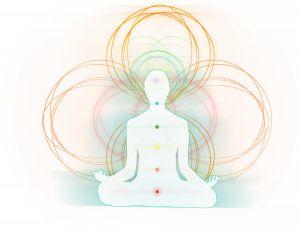

This is an excerpt of Tara’s book Enlightenment through the Path of Kundalini
I am in agreement with other experts of kundalini like Lee Sannella and Yvonne Kason that the so-called ‘kundalini-psychosis’ is a misnomer because it has, in fact, little in common with the textbook mental disease called psychosis. However, if someone has some very confusing symptoms that include unwanted paranormal experiences it can result in a crisis that may look to the untrained eye like a complete breakdown or psychosis.
The person may be flooded with paranormal visions and voices, they may have the sensations

A person with a kundalini crisis can usually pinpoint the exact time and trigger of the beginning of their crisis. In most cases the trigger was intensive spiritual practice. By contrast, ordinary psychosis usually develops slowly and gradually and the patient cannot remember a healthy sense of self.
A person in a kundalini crisis can remember what it is like to feel ‘normal’ and wishes to go back to this state, while a psychotic patient has lost touch with their healthy state of mind.
People in a kundalini crisis can talk about what is going on their mind and usually they also want to talk about this. People with ordinary psychosis rarely want to talk about the content of their psychotic mind.

In my experience, psychosis-like breakdowns do not happen very often in people with active kundalini. They are most likely to happen when someone has a history of drug taking. In my own clinical experience, I have observed that frequent drug use – even if it was years in the past – seems to make a severe kundalini crisis more likely. I have also observed that ex-drug users sometimes ‘swap’ the drugs for the intense highs and lows of a kundalini awakening and become attached to all the turmoil. Sometimes, they also use indiscriminate visits to energy healers to get more ‘experiences’ in a similar way to taking drugs, which can have disastrous consequences for their over-sensitive mind.
On the Internet you can find the most horrendous stories of people suffering from kundalini-psychosis but in my therapy practice I have never witnessed truly hopeless situations. Usually, people get better fairly quickly by stopping the things that aggravate them (e.g. going to energy healers or doing breathing exercises) and working with higher-consciousness healing.
| Case-study: Gary, 34 years Gary is a highly intelligent accountant who came to see me because he had some sort of breakdown caused by kundalini. Gary had a history of heavy drug taking but had given up the drugs after a very painful break-up with his girlfriend two years earlier. He then went travelling to Bali where he became acquainted with spiritual ideas and the concept of kundalini. He visited many healers and spiritual teachers but did not engage in a sound spiritual practice. Instead, he ‘consumed’ different forms of healings in a haphazard way, much like he used to take drugs without ever considering the risks of doing so. Once Gary had arrived back home he started to develop strange fears and kundalini-like symptoms, which he tried to counteract through cathartic outbursts. He also continued going to many different energy healers. Gary spent hours and hours ‘letting his feelings out’ but his symptoms grew steadily worse until he was engulfed with frightening visions and unable to go to work. I explained to Gary that the forceful expression of emotions was greatly exacerbating his symptoms and that it would be wise to stop this form of self-made therapy. I also strongly advised him to stop seeing energy healers as both these avenues of self-healing were actually making him worse. Gary only very reluctantly agreed because he was virtually addicted to doing these things. We then worked through the many guilt-feelings that surfaced for Gary as he had hurt numerous people throughout the years of his drug taking. Doing this was not easy for Gary who had always chosen the ‘easy route’ of numbing his feelings through his various approaches of thrill seeking. During the months that Gary worked with me, he steadily grew more stable and we ended the sessions once he was ready to go back to work. |
Tara offers help for problematic kundalini awakening symptoms here: kundalini healing
View other articles about kundalini problems: head pressure
Find out more about kundalini on my second website www.kundalinisymptoms.com
If you like the info don’t forget to press the facebook ‘like button’ so that others may benefit from it, too. Thanks a lot.
